13 Neuromechanics of Basketball
Cameron Timmons, MS
Introduction
Hello everybody, my name is Cameron Timmons, and I am a master’s student at Cal Poly Humboldt. I am a member of the Cal Poly Humboldt men’s basketball team, and basketball has had a huge impact on my life. Wherever I have played, the same joy and passion have always stayed with me. Writing this chapter, I wanted to give an insight into the nuances of the game and explain how neuromechanics is incorporated into it. I hope you all enjoy!
Sensory feedback in the basketball population
There are five senses that are important to movement: vision, vestibular system, tactile, proprioception, and auditory. The visual system is one of the most important systems when it comes to sensory feedback. They give us the shape, color, size, and brightness of objects with a great level of accuracy. The visual system also helps guide humans in a lot of goal-directed movement. The vestibular system provides us with whole-body balance and information about our head position in space. It allows the nervous system to have quick and complex movements to restore balance. It sends signals to cortical areas of the brain to provide a perception of gravity, movement, and orientation. Tactile is the sense of touch, and this system is important because the neurons from the lower limbs to the face respond primarily to tactile stimuli. Lesions in the lower body will have a significant effect on the loss of tactile sensation. The different parts of the brain signal down to parts of the body, so with lack or loss of any of those functions can have a great impact on tactile senses. Proprioception is interesting because the loss of proprioceptive function will have an immediate impact on the ability to control your body and movements. Proprioception is where are limbs are in space and relative to where it is to our body. So if this were affected in the brain, we would have trouble walking, sitting, and standing. Lastly, the auditory system allows us to localize sound in space, as well as understand speech and languages being said. All of these systems are important for everyday human life, especially in basketball. The loss of any of these functions would have an impact on playing the sport.
The vestibular system is an important part of basketball when it comes to postural control. Postural control is the ability to control the body’s center of mass in relation to the base of support (Tsang, 2014). So when the players are shooting, making quick cuts and pivots, dribbbling on the move, it’s extremely important to have stability and not lean and fall over. A study looked at good eye coordination and postural control in trained basketball players and compared both before and after vestibular stimulation. They found that vestibular stimulation could enhance balance and eye coordination in young basketball players (Tsang, 2014). With vestibular input being important for maintaining posture and stability in the turning movements, this helps with the development of youth players.
Many senses can affect an individual when playing basketball. In a study that looked at static balance and proprioception evaluation in deaf basketball players, they looked at how auditory, vestibular, and proprioception were integrated. Since the vestibular system regulates balance, impaired regulation may occur in people with hearing loss (Cobanoglu et al., 2021). Although athletes who are deaf or have a hearing loss aren’t physically affected while playing, having good balance while performing the different movements in basketball is important for performance and reduces injuries (Cobanoglu et al., 2021). The article stated that there is also evidence that proprioception plays a role in improving sports performance and preventing injuries. Balance and proprioception are extremely important to people who are affected by hearing because of the impact of the vestibular system (Cobanoglu et al., 2021). Any changes in any of those senses can lead to an imbalance in the body.
Vision is another important sense when it comes to basketball. How close your teammate is to you or how far the basket is away when you are shooting, visual information helps with this. Visual information processing plays an important role also with precise decision making, and getting the ball where it needs to be at the right time (Vera et al., 2020). Athletes have impeccable visuo-motor performance skills and visual skills in their specific area of sport (Vera et al., 2020). For basketball players, this sense can help you with seeing your teammates, seeing open looks, and seeing what is there vs what isn’t.
Sensory feedback is an important part of human function. Specifically with basketball players, good balance, movement, vision, and knowing where you are are essential, and with one of these senses being disrupted, it will play a huge role in performance. Looking at how these senses are integrated and how if you lose one, then the others will be affected, is interesting to see with how it can relate to basketball.
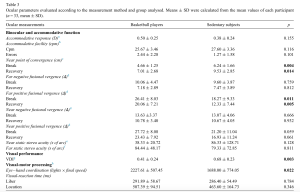

Cortical processing in the basketball population
Most things that we do daily involve the cerebral cortex. The cortex receives visual information, and then it processes this information and sends signals to different areas. It’ll send it to areas like the vestibular and somatosensory systems in the parietal cortex.
Then it’ll relay the information to the frontal lobe. Individuals who have neurological disorders like strokes are affected in areas of the different cortices. There is also the basal ganglia, where disorders in this area can range from excessive involuntary movements to slow and a lack of movement. In basketball, the cortical areas are present and affect players. The motor areas of the brain are responsible for planning and the execution of the action.
Basketball players have to plan out the movements and ways to get around defenders and create angles to score. Studies show that athletes perform better in cognitive tasks, and athletic training can have a positive effect on a general cognitive domain (Qiu et al., 2019). Through long-term training, activation in the brain increases involvement in planned and action comprehension (Qiu et al., 2019). Players can develop over time certain ways of planning and affecting their moves in more complex situations.
With the motor system allowing athletes to perform all types of movements, a study looked at how the brain plasticity of elite athletes has been studied over time. There have been structural brain changes in a variety of sports, and they found that primary motor cortices are well developed in basketball players (Kim et al., 2022). The importance of the lower extremity motor control in basketball is a pivotal factor in play. With how different cuts and quick and short bursts, movement and the execution of the movement are key.
Basketball requires complex and simultaneous cognitive processing. With the execution and the precision, it is important to choose relevant information to process. In a study, they found that neural underpinnings of extensive basketball practice show neuropathic induction in structures highly involved in motor learning, such as the cerebellum (Lucia et al., 2023). Basketball players have to learn and adapt in their sport, just like in other sports. The motor processing and development of the skills over time are enhanced as they play with tougher competition. Cognition and skills play a role in the individual.
The cortical process plays a pivotal role with a basketball player. The movements and reactions of the players are key to their success. With how the brain works and how it can send these signals to the parts of their bodies, it is important that they continue to develop.
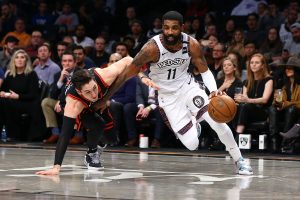
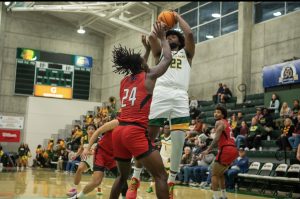
Motor output in the basketball population
Movement in basketball and everyday activities derives from signals from the brain to certain areas of our bodies. There are different types of motor control and movements. There is voluntary movement, which takes more time to be initiated or corrected, involves neural loops with more synaptic connections, shows larger indices of variability, involves large groups of muscles that distribute across limbs and the body, and doesn’t necessarily need to be tied to an external sensory stimulus. There is also feedforward and feedback control. Feedforward control happens if the controller supplies the signal independently of the values of state variables. An example like this that the book gave was like kicking a soccer ball. Feedback control happens if a controller changes command signals based on their effects on state variables. Basketball players use motor control in all aspects of the sport. From shooting to playing defense, their motor neurons are always at work.
Basketball players have improved their motor output, like explosiveness, shooting ability, and agility, through complex training. Shooting ability is a skill that has to be trained time and time again to perfect it. Speed and accuracy will affect a player’s making ability. Releasing the ball too slow will have a higher chance of the defender getting in the way of your shot or blocking it, and if you release it faster you have to account for the trajectory of the shot and have a higher chance of missing becuase you are more focused on getting the shot off rather than making it. Highly skilled players can pull off quick release shots to catch the defenders off guard while having the accuracy and precision to make them. Scientific literature has shown that there is a poor correlation between shooting speed and shooting precision (Netolitzchi 2019). When shooters have really good precision and have a quick release, it is almost impossible to disrupt their shot. They developed the muscle memory to release the ball at a certain height and speed, and when they hit that, it is on them if they make or miss more than if the defender was playing good defense.
Another thing to look at is motor response time in players. Basketball players have to be ready to react quickly throughout a game. There is scientific evidence that suggests that speed training is nervous system training (Khalaf, 2023). So it is important to have a good relationship between nerve chemistry and muscle physiology to obtain rapid contractions for those quick reactions when the offensive player is trying to score or catch and shoot (Khalaf, 2023). The human brain needs sensory inputs to make the cognitive function more active; once that’s taken place, it leads to the physical movements sent from the brain. But sometimes it struggles to react quickly due to pharmacological exhaustion, according to the player’s fatigue (Khalaf, 2023). When players are fatigued, it is difficult for them to perform the same way. Fatigued players tend to foul more as they are less focused. They tend to make mental mistakes more so than physical mistakes, like forgetting a play or remembering where they should be on the floor, or remembering to check how much time is on the clock during their possession. The motor output works hand in hand with how quickly the player can use the sensory information it is trying to attain, whether that be looking for an open shot or an open teammate, and then putting that with how quickly their motor response is to that action. For more information on fatigue click here.
Something else that happens with basketball players is motor noise. It is the noise that randomly disturbs signals in the nervous system results from various processes (Nakano et al., 2020). Motor noise is attributed to the physiological organization of the pool of motor neurons and their muscle fibers (Nakano et al., 2020). So humans can’t completely reproduce the same movements, like in basketball, we can’t reproduce the same shot. They also call it signal-dependent noise, and with it, humans can minimize the motor variability (endpoint of arm reaching) in the presence of such intrinsic noise (Nakano et al., 2020). So when shooting free throws, basketball players will rely on the release of the shot at the speed they are used to. The study found that skilled basketball players minimize the speed of the shot to minimize the effect of release parameter errors on their performance (Nakano et al., 2020).
Basketball players use motor signals for all types of basketball activities. The goal-directed movements are there to improve performance and happen from the signals being sent to the areas that are involved. From shooting to dribbling to playing defense, these goal-directed movements use the knowledge from what they have already done and send the signals as fast as they can to perform the movement.
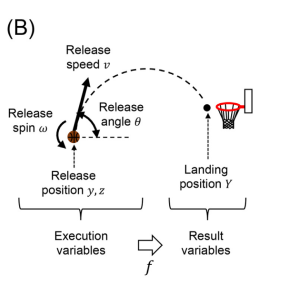
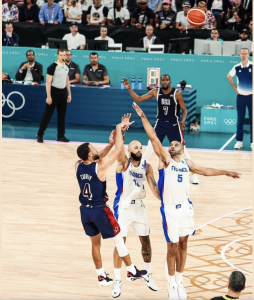
References
Cobanoglu, G., Suner-Keklik, S., Gokdogan, C., Kafa, N., Savas, S., & Guzel, N. A. (2021). Static balance and proprioception evaluation in deaf national basketball players. Baltic Journal of Health and Physical Activity, 13(1), 9–15. https://doi.org/10.29359/BJHPA.13.1.02
Increasing precision and optimising efficiency in distance basketball shooting (6.75 m). (2019). Discobolul – Physical Education, Sport and Kinetotherapy Journal. https://doi.org/10.35189/iphm.icpesk.2019.25
Khalaf, Z. M. (2023). The effect of light stimulation technology training on brain signals, motor response time, and jump shot accuracy among young basketball players. SPORT TK-Revista EuroAmericana de Ciencias Del Deporte, 16. https://doi.org/10.6018/sportk.563601
Kim, J. H., Park, J. W., Tae, W. S., & Rhyu, I. J. (2022). Cerebral cortex changes in basketball players. Journal of Korean Medical Science, 37(11), e86. https://doi.org/10.3346/jkms.2022.37.e86
Lucia, S., Bianco, V., & Di Russo, F. (2023). Specific effect of a cognitive-motor dual-task training on sport performance and brain processing associated with decision-making in semi-elite basketball players. Psychology of Sport and Exercise, 64, 102302. https://doi.org/10.1016/j.psychsport.2022.102302
Nakano, N., Inaba, Y., Fukashiro, S., & Yoshioka, S. (2020). Basketball players minimize the effect of motor noise by using near-minimum release speed in free-throw shooting. Human Movement Science, 70, 102583. https://doi.org/10.1016/j.humov.2020.102583
Qiu, F., Pi, Y., Liu, K., Zhu, H., Li, X., Zhang, J., & Wu, Y. (2019). Neural efficiency in basketball players is associated with bidirectional reductions in cortical activation and deactivation during multiple-object tracking task performance. Biological Psychology, 144, 28–36. https://doi.org/10.1016/j.biopsycho.2019.03.008
Tsang, W. W. N. (2014). The effect of vestibular stimulation on eye-hand coordination and postural control in elite basketball players. American Journal of Sports Science, 2(2), 17. https://doi.org/10.11648/j.ajss.20140202.12
Vera, J., Jiménez, R., Cárdenas, D., Redondo, B., & García, J. A. (2020). Visual function, performance, and processing of basketball players vs. sedentary individuals. Journal of Sport and Health Science, 9(6), 587–594. https://doi.org/10.1016/j.jshs.2017.05.001
Visions tells us where objects are in space and how close or far apart they may appear.
regulation of locomotion and body movement in relation to orientation, balance, and posture that consist of vestibular nerve in inner ear and processing of postural stability information
sense of touch
The sense or perception of the position, movement, and spatial orientation of one's body and its limbs
allows us to localize sound in space